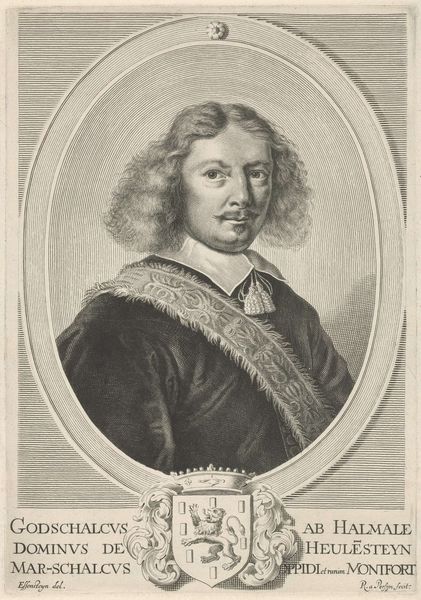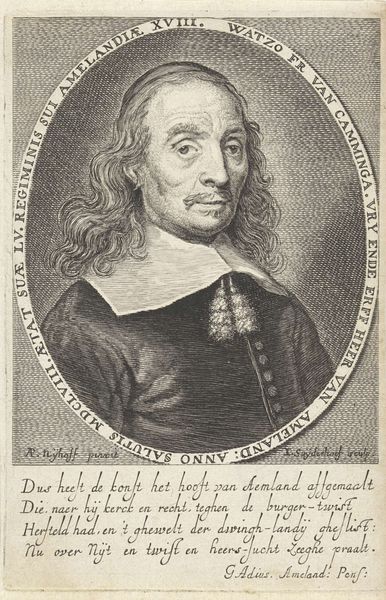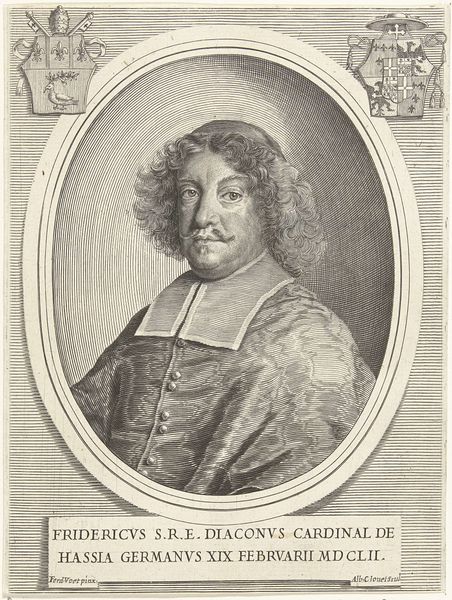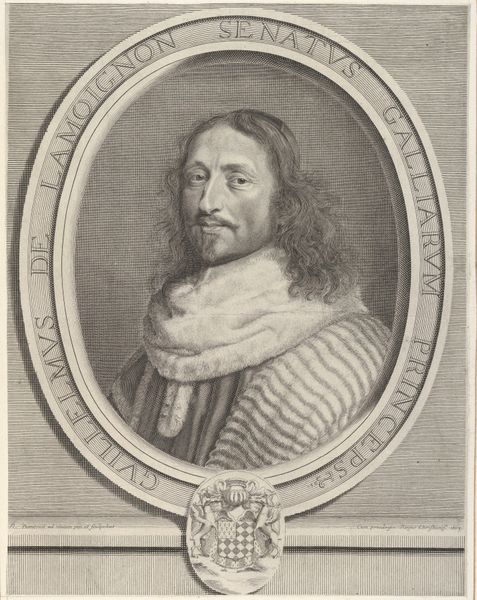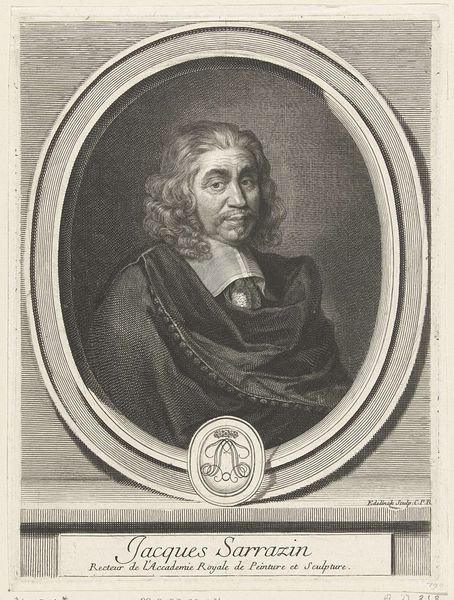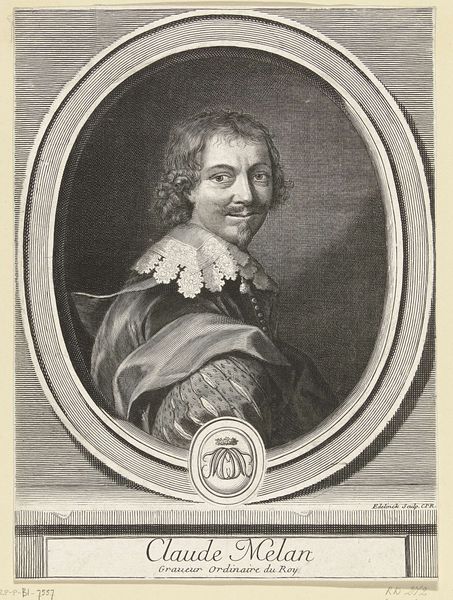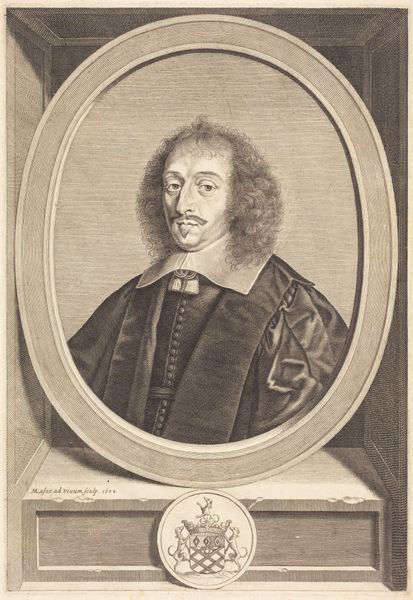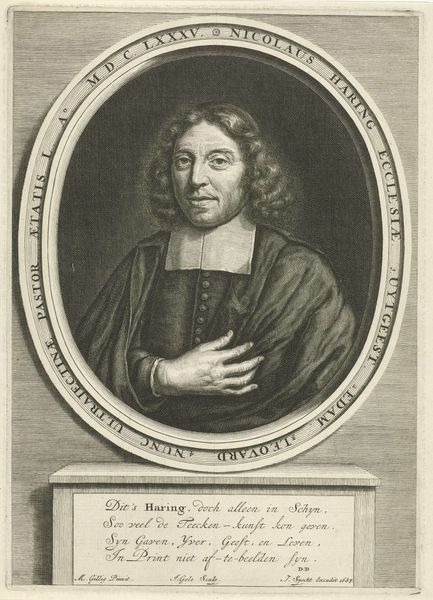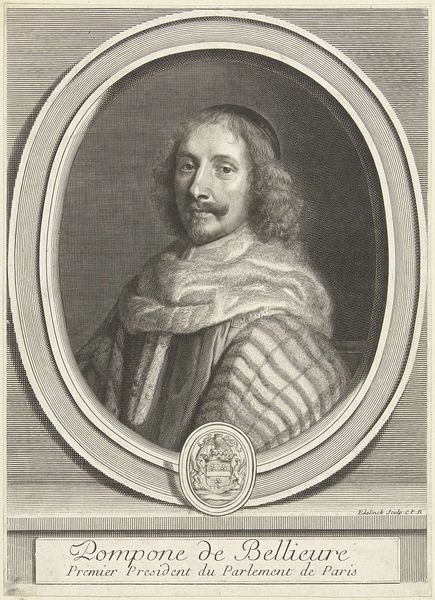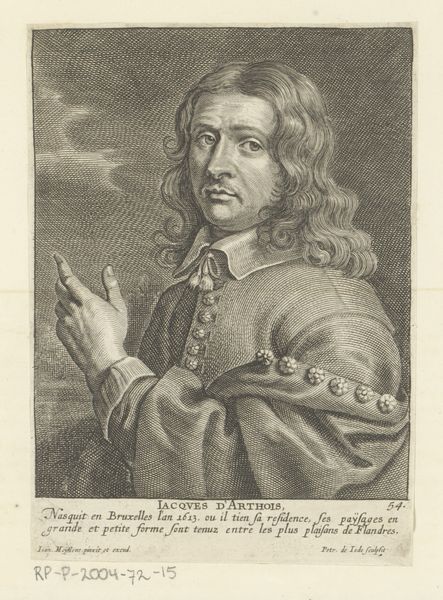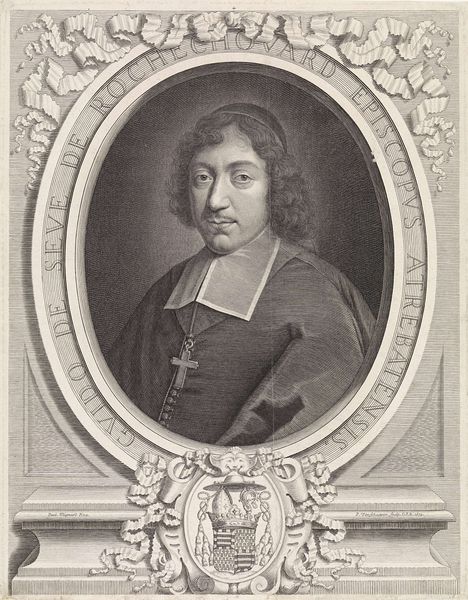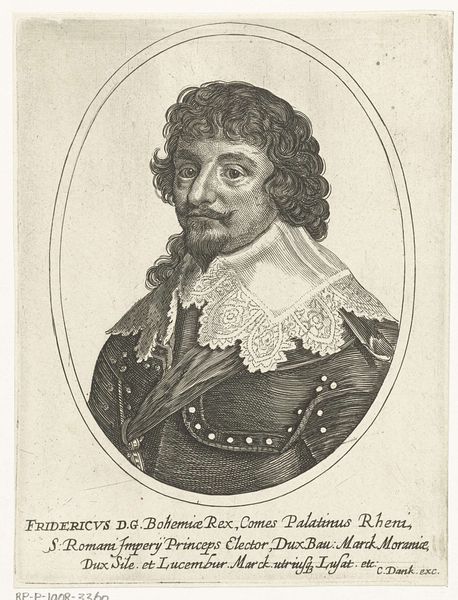
print, engraving
portrait
pencil drawn
baroque
dutch-golden-age
portrait drawing
engraving
Dimensions: height 113 mm, width 102 mm
Copyright: Rijks Museum: Open Domain
Editor: Here we have Richard Collin's "Portrait of the Utrecht Painter Jan Both," created sometime between 1650 and 1678. It's an engraving, a print. I'm immediately struck by the detail achieved in the rendering of Both's hair and clothing using only lines. What can you tell me about its visual composition? Curator: Note how Collin employs varied densities and orientations of lines to define form and texture. Observe the stark contrast created by the horizontal lines in the background against the curves of the oval portrait and the swirling hair of the subject. This juxtaposition creates a visually compelling tension, emphasizing the contours of Both's face. Editor: I see what you mean about the tension. It is indeed very noticeable and draws the eye to the center. Can you tell me more about the effects achieved by this print? Curator: Precisely. Consider, as well, the material reality of the print itself. The ink is meticulously deposited to generate an image. Every stroke carries weight due to its conscious positioning and relation to the overall organization. Look carefully how this accumulation and concentration contribute in shaping our viewing experience. It is about the artist using materials to develop a pictorial language. Editor: So, it's less about who Jan Both was, but more about how Collin composed the work and deployed the medium? Curator: Indeed. The portrait serves as a vehicle to explore and display formal arrangements. We are invited to closely observe the interplay of lines, tonal contrasts, and the subtle gradations that emerge as the medium's defining qualities. Editor: It’s fascinating to think about the conscious decisions behind each mark. I guess I usually look for the story in the subject, rather than in the technique itself. Thanks for pointing that out! Curator: The intrinsic components establish this visual dialect. Appreciating this interplay allows for deeper appreciation and enhanced meaning.
Comments
No comments
Be the first to comment and join the conversation on the ultimate creative platform.
